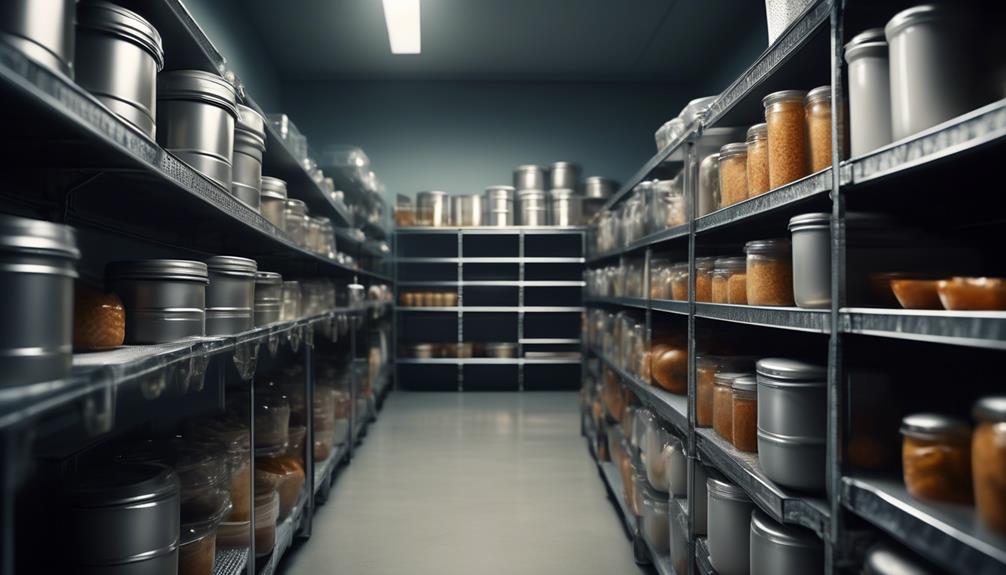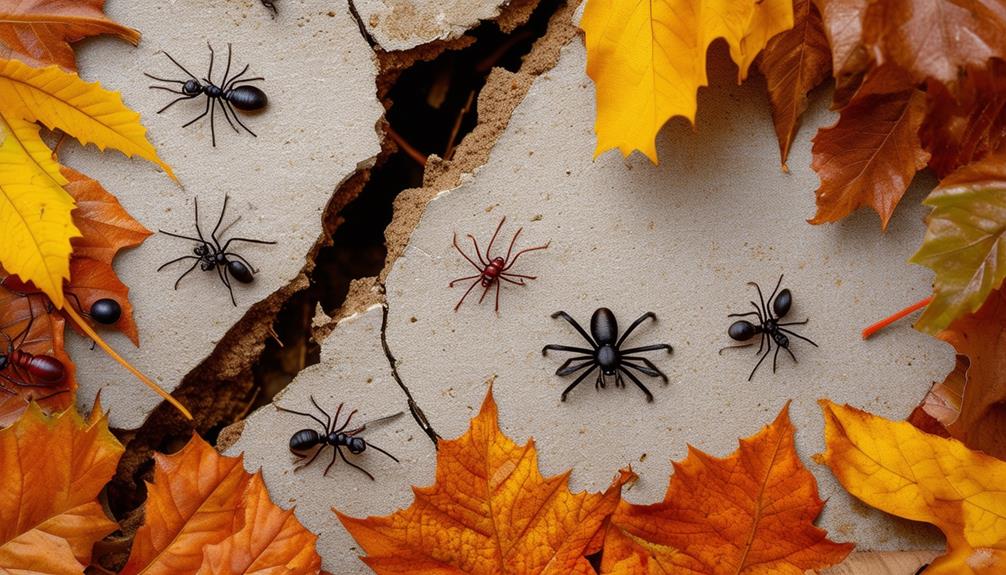You’ve probably heard the saying, ‘Prevention is better than cure.’ Well, when it comes to rodent control in food storage areas, this adage couldn’t be more true.
The presence of rodents in such areas can pose a serious threat to food safety, leading to contamination and potential health risks for consumers.
But fear not, because in this discussion, we will delve into the world of rodent control, exploring the common species found in food storage areas, the health risks associated with their presence, and the effective prevention and control measures that can be taken.
By the end, you’ll be equipped with the knowledge you need to keep those pesky rodents at bay and ensure the safety of your food storage areas.
So, let’s get started!
Key Takeaways
- Identifying and sealing entry points is crucial for effective rodent control in food storage areas.
- Rodents can carry and transmit diseases, posing a health risk and potentially contaminating food and surfaces.
- Prompt action is necessary when signs of rodent infestation are detected to prevent further damage and contamination.
- Regular inspections, maintenance, and proper sanitation practices are essential for preventing rodent infestations and ensuring food safety in storage areas.
Common Rodent Species Found in Food Storage Areas
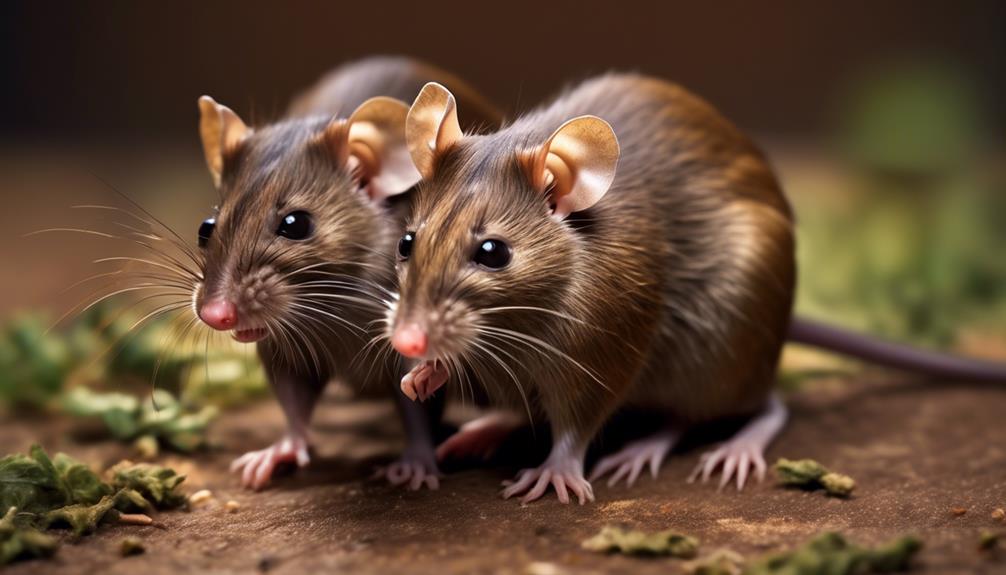
There are several common rodent species that can be found in food storage areas. Understanding their behavior patterns and identifying their entry points is crucial for effective rodent control.
The most common rodent species found in food storage areas include mice, rats, and squirrels. These pests are attracted to the abundance of food and shelter that such areas provide.
To identify rodent entry points, carefully inspect the exterior of the building, paying close attention to gaps in walls, doors, and windows. Seal any openings using durable materials like steel wool or caulk.
Additionally, eliminate any potential food sources by properly storing food in sealed containers and promptly cleaning up spills.
Health Risks Associated With Rodent Contamination
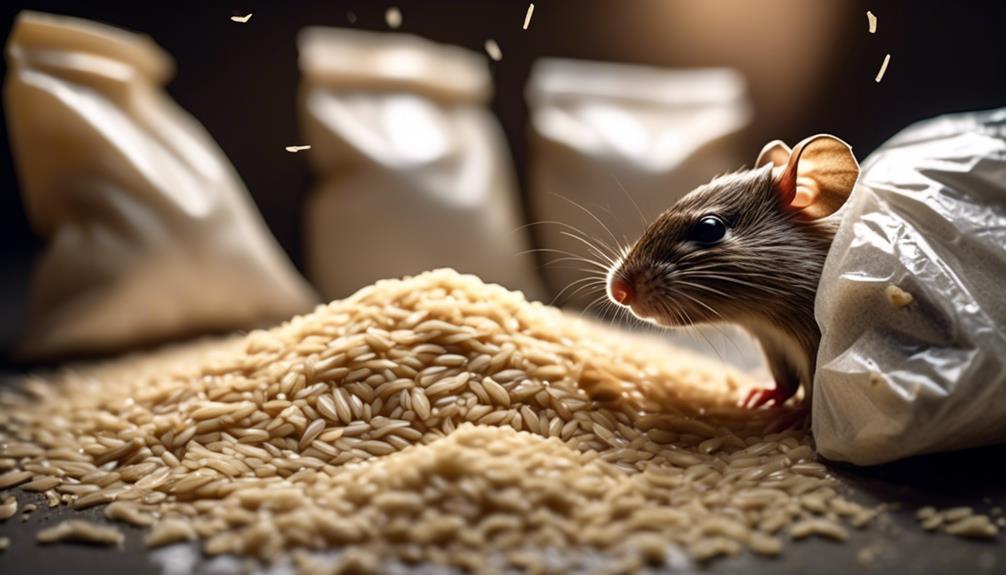
Rodent contamination poses significant health risks that mustn’t be overlooked.
Rodents can carry and transmit various diseases, known as rodent borne diseases, that can contaminate food and pose a threat to human health. Some of these diseases include salmonellosis, leptospirosis, hantavirus pulmonary syndrome, and rat-bite fever. These diseases can cause symptoms ranging from mild gastrointestinal discomfort to severe respiratory problems and even death in rare cases.
Additionally, rodent droppings, urine, and hair can contaminate food and surfaces, leading to further spread of pathogens.
To ensure food safety, it’s crucial to adhere to strict food safety standards and implement proper rodent control measures in food storage areas. This includes regular inspections, proper sanitation practices, and the use of effective rodent control methods to prevent contamination and protect public health.
Signs of Rodent Infestation in Food Storage Areas
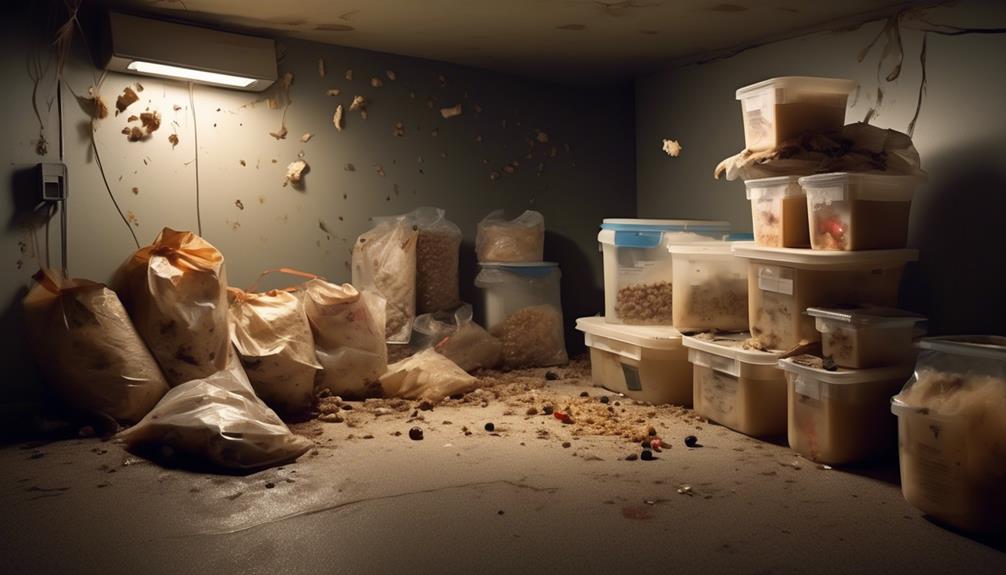
If you suspect a rodent infestation in your food storage area, be on the lookout for specific signs that can indicate their presence. One common sign is the presence of rodent droppings. These small, pellet-like droppings can be found near food sources or in hidden corners of your storage area. They’re typically dark in color and can be a clear indicator of rodent activity.
Another sign to watch out for is gnaw marks. Rodents have a constant need to chew, and they’ll gnaw on various materials, including food packaging, wires, and wood. If you notice any signs of gnawing, it’s essential to take immediate action to prevent further damage and potential contamination of your stored food.
Being vigilant and identifying these signs early can help you address the issue promptly and effectively.
Effective Prevention and Control Measures for Rodents
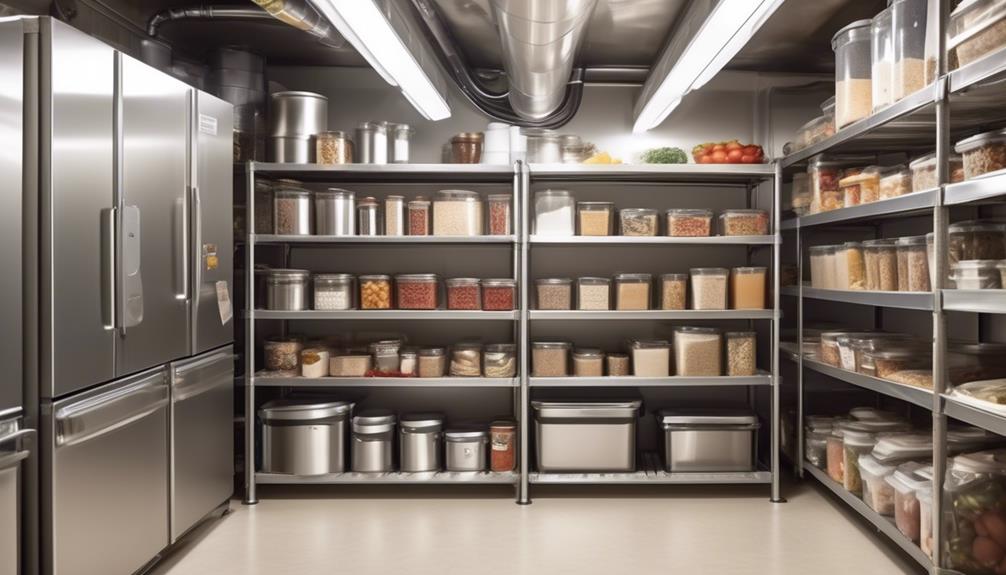
To effectively prevent and control rodents in your food storage areas, it’s crucial to implement proactive measures. There are several rodent control methods and rodent exclusion techniques that you can employ.
First, ensure that all openings, cracks, and crevices are sealed to prevent rodents from entering. Use weather stripping on doors and windows and install mesh screens on vents and openings.
Regularly inspect your food storage areas for signs of rodent activity, such as droppings or gnaw marks, and take immediate action if any are found. Additionally, maintain cleanliness and proper sanitation practices to eliminate potential food sources for rodents.
Store food in sealed containers and keep the area free from clutter. By implementing these prevention and control measures, you can effectively safeguard your food storage areas from rodent infestations.
Importance of Regular Inspections and Maintenance

Regular inspections and maintenance play a vital role in ensuring the effectiveness of rodent control measures in your food storage areas.
By implementing regular maintenance routines, you can identify and address any potential vulnerabilities or issues that may compromise the integrity of your storage areas. This proactive approach helps prevent rodents from gaining access to your food supplies and reduces the risk of contamination.
Additionally, having well-defined inspection protocols in place allows you to detect any signs of rodent activity early on, enabling you to take immediate action to eliminate the problem.
Regular inspections also provide an opportunity to assess the condition of your storage areas, identify any structural weaknesses, and promptly address them.
Frequently Asked Questions
How Can I Effectively Clean a Food Storage Area After a Rodent Infestation?
To effectively clean a food storage area after a rodent infestation, start by removing all contaminated items. Then, thoroughly sanitize the area using cleaning methods like disinfectants and hot water. Finally, implement rodent proofing techniques to prevent future infestations.
Are There Any Natural Repellents That Can Be Used to Keep Rodents Away From Food Storage Areas?
To keep rodents away from food storage areas, you can try using natural repellents or DIY rodent control methods. These can help prevent contamination and ensure the safety of your food storage.
Can Rodents Chew Through Plastic Containers Used for Storing Food?
Yes, rodents can chew through plastic containers used for storing food. To prevent contamination, consider using rodent-proof containers or alternative storage options such as metal or glass containers.
What Should I Do if I Find Rodent Droppings in My Food Storage Area?
If you find rodent droppings in your food storage area, take immediate action to clean and sanitize the area. Rodent droppings can pose potential health risks, so it is important to follow proper cleaning tips to prevent contamination.
How Often Should I Schedule Professional Pest Control Services to Prevent Rodent Infestations in Food Storage Areas?
To prevent rodent infestations in food storage areas, schedule professional pest control services regularly. The scheduling frequency depends on the severity of the issue and the effectiveness of rodent prevention techniques used.


